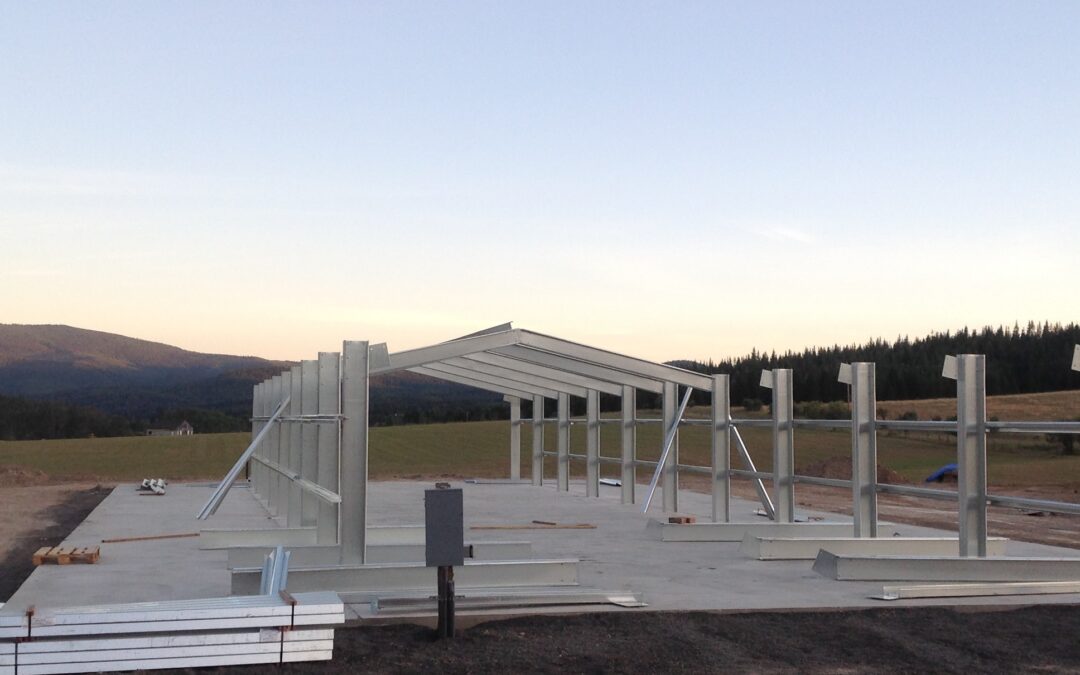You’ve got your plans and you’re ready to purchase your steel building. Great!
Now comes the less glamorous part: your building permits.
Here, we’re breaking down everything you need to know about construction permits for steel buildings, from why you need them, to figuring out when you need them, to how to get one.
The Importance of Construction Permits
Before we talk about whether you need a building permit, let’s talk about why you need a building permit.
Building permits are a type of authorization that must be granted before a construction project can legally begin. Investors and economists closely watch the number and type of permits issued each month, as this can give a major hint as to the health of the economy in the near future.
For consumers and builders (i.e. you) construction permits are vital because they act as the roadmap to ensure that your building is up to safety standards, helps your resale value, keeps your contractor honest, and even ensures that your insurance stays valid.
Who knew that one little slip of paper had so much power to make or break your building?
Even so, many homeowners don’t understand whether they need a permit, what kind of permit they need, and where to get one.
Do You Need a Permit for a Steel Building?
So, do you need a permit for a steel building?
If you’re building a brand new structure, the answer is generally yes. Even some home improvement projects require permits.
It sounds like a pain (in fact, it is a pain) but it ensures that anyone who sets foot in your building will be safe. The intricacies of that are a bit more complicated.
How Do You Know if You Need a Permit?
Unless you’re a builder yourself or work in the construction industry, it can be tricky to know when your building project requires a permit.
There are no federal or state-wide regulations with regards to building, which means that zoning guidelines are normally set by your local governing body (click here to check out Georgia’s general guidelines on zoning).
In general, you should always assume that you do need a permit and plan accordingly. If you think there’s a chance your building might be exempt, talk to your local building department or to your contractor and see what they think.
Who’s Responsible for Getting One?
So, who’s responsible for acquiring a construction permit?
It’s simple: either the property owner or the contractor on the job.
Most states will allow a homeowner to pull their own permits, but will also allow a contractor to do it.
How to Get a Permit
With all of that in mind, you’re reading to tackle getting your building permit. That way, you can start your steel building ASAP.
Check Your Zoning Regulations
The first order of business is to check your local zoning regulations.
As we noted, these are normally set by your local governing body, which means they vary based on what state, city, county, and district you live in, as well as the kind of building that you want to construct.
This is how you avoid having, for example, a car manufacturing plant in the middle of a quiet suburban neighborhood.
This is why a building constructed in a commercial area will have different regulations and zoning ordinances than a building in a residential area, even if they’re only a few streets apart.
As such, they’ll have different rules regarding things like building height, facades, square footage, even colors.
Before you purchase your building or put in an application for any type of metal building permit, it’s a good idea to make an appointment with a local building official to get the details of zoning ordinances for the area you want to build. This will help you figure out if the type of building you want is appropriate for the lot’s zoning restrictions.
Get the Right Permit
If it turns out that your building doesn’t quite match the lot’s zoning restrictions, don’t panic. Since you talked to the local building official first, it’s easy enough to modify your plans to meet the zoning requirements.
Alternately, you can try to work with the zoning board to see if they’ll make exceptions to the zoning restrictions on that particular lot.
If you do decide on the latter option, it’s a good idea to communicate with your neighbors first to get their support–they’ll have a lot of sway with the zoning board.
Once you have established that your plans comply with the zoning ordinances (or you’ve gotten an exception) you can apply for the relevant building permit.
During this process, your local governing body will want to review your certified blueprints to look at things like:
- Square footage
- Height
- Width
- Building materials
- Wind loads
- Snow loads
- Resistance to natural disasters
- Electrical wiring
Depending on the manufacturer, you can get this information from the as-built drawings. Keep in mind that officials will want to review any third-party certified plans for the building and its foundation.
If your manufacturer gives you any resistance on this front or is unable to provide the plans at all, you may need to change manufacturers altogether–it’s a major red flag for you and building officials.
Looking to Build a Steel Building?
Whether you’re looking to get started with your steel building project or you’re ready to dive right in, we’re here to help.
We offer steel buildings in a variety of styles from American Barn to Single Slope. If you’d like to get a quote on your project, click here, or if you have any questions, don’t hesitate to get in touch.


Recent Comments